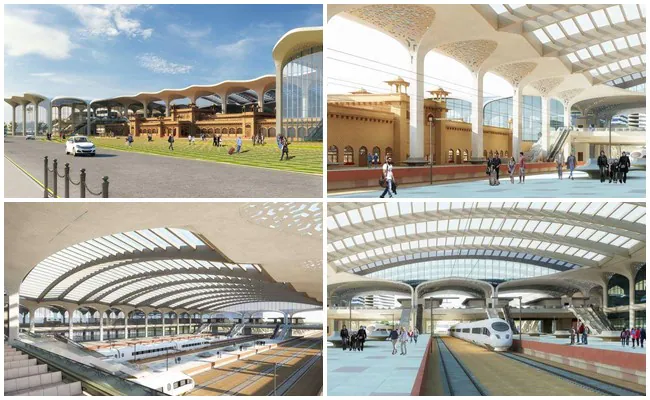What Are The Form-Based Codes Adopted For Station, Railway Land Redevelopment

Artist impressions of redeveloped Gwalior railway station (Picture Credits: IRSDC)
The Indian Railways’ nodal agency, responsible for the station redevelopment project as well as commercial development of railway land, has developed a first-of-its-kind form-based codes approach, based on the principles of transit-oriented development. The Indian Railways’ special purpose vehicle – Indian Railways Station Development Corporation (IRSDC) will adopt the form-based codes to redevelop railway stations and existing railway land to offer aesthetic, world-class facilities to passengers and ensure sustainable development. (Also Read: Indian Railways Adopts Form-Based Codes For Station Redevelopment Project )
According to a statement shared by the organisation, the form-based codes have been developed in line with national schemes such as National Transit Oriented Development Policy, Smart Cities or AMRUT scheme, Green Building Norms, as well as Affordable Housing.
What are Form-Based Codes For Indian Railways’ Station Redevelopment Project? All You Need To Know
According to the Indian Railways Station Development Corporation, the form-based codes are simply a comprehensive set of codes, guidelines, or norms prepared by the nodal agency, to plan station redevelopment and regulating the commercial development of railway land. The codes regulate building forms, relationship with the urban environment, and also strengthens the performance of infrastructural spaces. The form-based codes or the handbook are compiled in six parts. They are as follows:
1. Handbook for Station Planning
The station planning handbook comprises tools and norms for the design of station operational areas. It is basically a guide to be followed by all stakeholders involved in the process of station redevelopment.
2. Guidebook for Operationalizing National Transit-Oriented Development Policy for Station Redevelopment
This is a guidebook that comprises processes and tools for layout planning within the railway land. It assists in the value creation of station redevelopment, specifically enhancing the value of precinct sustainably through regeneration of derelict, strategic restructuring, under-utilized or overburdened areas.
3. Form-Based Codes for Commercial Development of Railway Land
This guidebook comprises the sub-plot development control norms and codes for layout regulating plans. They are basically norms or codes for property development cards for sub-plots.
4. Codes for Architectural Design of Commercial Assets
This comprises norms or codes for the architectural design of assets within the sub-plots designated for railways’ commercial development. This follows National Building codes and the norms applicable for transit-oriented development are integrated. Mixed-use, mixed-income with active frontages, as well as demand management-based parking provisions are accommodated in these codes.
5. Green Building Codes for Commercial Development on Railway Land
This comprises the minimum, non-negotiable green building requirements recommended by the Bureau of Energy Efficiency, a statutory body under the central government. The norms or codes are optimized to meet the recommendations of the National transit-oriented development policy.
6. Codes for Railway Heritage Asset
The codes for railway heritage asset adopts the government’s think tank – Niti Aayog’s approach on improving the heritage management in India. It comprises tools and codes for maintaining railway heritage assets through management and conservation with compatible utilisation and increasing revenue potential.
What are the advantages of Form-based codes?
The implementation of the form-based codes will offer several benefits for the station redevelopment project and commercial development:
- Standardization of planning and maintenance process.
- Ease-of-doing process for encouraging public-private partnership (PPP)
- Flexibility in asset use by making them responsive to market demand
- Sustainable development in urban areas by decreasing pressure on city infrastructure
Source link

